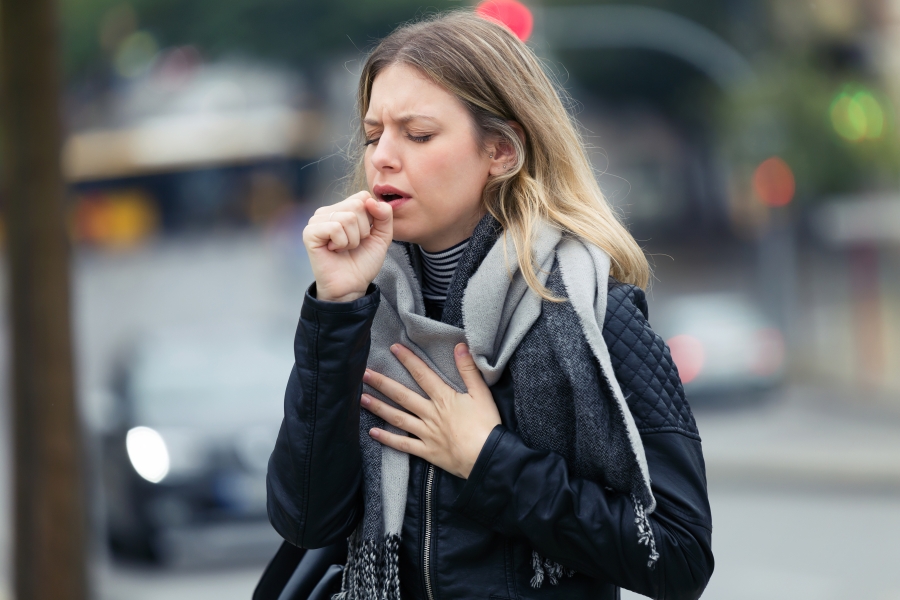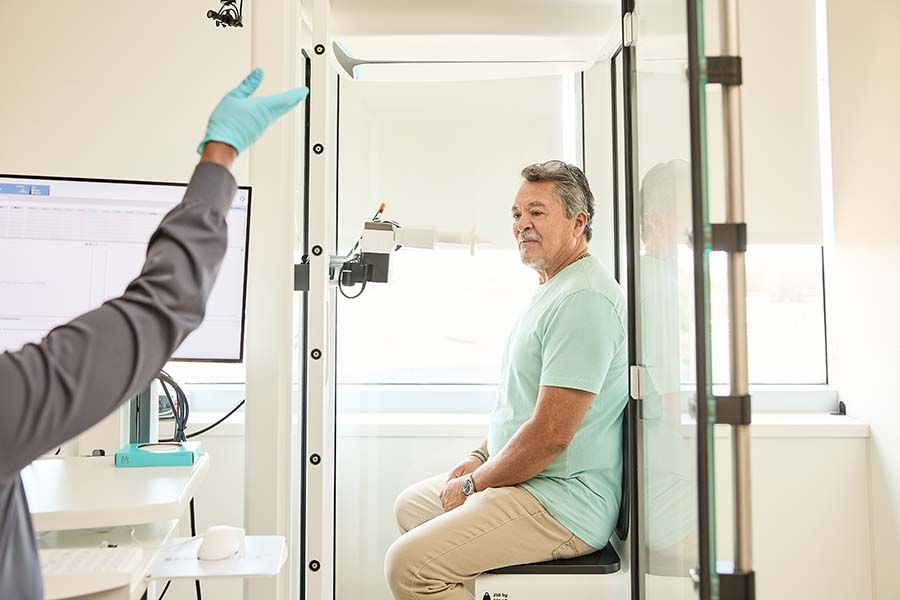As a pulmonologist, I see a lot of women with various types of lung disease. Many lung diseases are more common in women — particularly in women of color and people who identify as women within the LGBTQ community. They have especially high rates of chronic lung disease.
We don’t know all the reasons why these disparities in lung disease exist, but it is an area of continuing research. We do know that many factors — such as indoor and outdoor air pollution, access to health care, genetics, hormones, stress, and diet — can affect the development of lung disease. Misinformation, lack of education, and structural racism and gender bias also play an important role.
Women, Men and the Differences in COPD
One of the diseases I am increasingly diagnosing and treating in women is chronic obstructive pulmonary disease (COPD). Many diseases and conditions present differently in women than in men, and COPD is one of them. Ongoing research shows that more women than men in the U.S. are living with COPD. More women than men are also dying from the disease. In fact, the death rate from COPD is actually dropping in men, but it’s on the rise in women.
Women’s COPD symptoms are also generally more severe than those of men. Women also experience more flare-ups, or worsening of their symptoms, than men do.
The Role of Smoking and Marketing on Women’s Risk
There are many factors at play when we consider the impact of COPD on women’s health and quality of life. But one of the biggest factors is smoking.
Currently, almost as many women in the U.S. smoke as men. However, research shows that women with COPD have often smoked less than their male counterparts with COPD.
Because women’s lungs and airways are often smaller than those of men, cigarette smoking may be more dangerous to women’s lungs.
The tobacco industry has used targeted marketing over the decades to increase cigarette use in women, women of color, and women within the LBGTQ community.
In the 1960s and 1970s “slim” cigarettes were marketed to women wanting to appear feminine and thin. In the 1980’s menthol cigarettes were marketed to communities of color as being healthier and smoother when, in fact, they are more addictive and more harmful.
In the 1990s LGBTQ people were targeted by tobacco companies with the goal of increasing smoking rates in those communities. The companies used special promotions and customer recruitment, as well as sponsorships, to tie their products to the women’s rights movement, AIDS research, and music festivals predominantly for communities of color. It is no surprise that lesbian and bisexual girls are nearly 10 times more likely to smoke cigarettes compared to their heterosexual peers and that more than 85% of Black smokers use menthol cigarettes.
Tobacco use is the No.1 risk factor for the development of COPD. So if more women smoke cigarettes, more of them will be diagnosed with COPD.
Beyond Tobacco: Other Ways COPD Affects Women
COPD can impact women’s health in a variety of other ways, either with co-existing conditions, limitations, or dangerous outcomes:
Osteoporosis
This common bone disease weakens bone tissue, structure and strength. It can lead to increased fractures. About half of the people with COPD also have osteoporosis, and osteoporosis is far more common in my female patients than in my male ones. Smoking is a risk factor for developing osteoporosis. It can weaken bones by reducing their blood supply, which hinders their ability to form new cells and prevents the body from absorbing enough bone building calcium.
Anxiety, Depression, and Stress
These disorders can affect how people think, feel, and handle daily activities. Research shows that women with COPD may be more likely to experience anxiety and depression when compared to both men with COPD and women without COPD. One reason may be because women with COPD sometimes experience more shortness of breath than men with COPD. Unequal burdens of household and childcare responsibilities may result in higher levels of stress in women with COPD compared to men.
Hospitalizations
Women account for a higher number of COPD-related hospital stays and inpatient deaths than do men with COPD.
Activity Limitations
Studies show women with COPD report a lower ability to exercise and worse overall health-related quality of life compared to men with the condition.
Underdiagnoses and Misdiagnosis is Common
Research points to the fact that COPD may be underdiagnosed in women. I frequently have women referred to me who were told they have asthma but not COPD, even though many women have both conditions. Because of this bias, women are sometimes diagnosed at a later stage of the disease when treatment options can be more limited.
Women with symptoms of COPD may also be less likely to be offered the most common test for COPD, a spirometry test, than are men. This test is simple — you take a deep breath and blow as hard as you can into a machine that measures how much air you exhale and how fast you do it. It’s the first test I do for women who present with symptoms of COPD or who are at risk for the disease but don’t yet have symptoms. If more doctors would use a spirometry test on women who might have COPD, I believe the delay in diagnosis of the disease would decrease.
If one of my female patients presents with COPD symptoms, in addition to performing a spirometry test, I will:
- Ask about her symptoms, her personal health history, and her family health history. I’ll also inquire about her smoking history and/or her exposure to tobacco smoke and other toxins.
- Perform a physical exam, including listening to her lungs with a stethoscope.
Other tests may also be a part of the diagnostic process. These include:
- A chest X-ray or chest computed tomography (CT) scan. These tests create pictures of the heart and lungs and can show signs of COPD.
- Arterial blood gas test. This assessment measures oxygen and carbon dioxide in the blood. It can help determine whether or not a woman needs oxygen therapy.
- Pulse oximetry. This test measures oxygen levels in the blood via a painless clip on a finger or earlobe. It can determine if a woman isn’t getting enough oxygen.
How is COPD Treated in Women?
No matter what gender my patient is, I always discuss smoking with them if they currently smoke. Quitting smoking is especially important for people with COPD. It can help slow down the progression of the disease. In addition, research shows1 that women with COPD benefit from quitting smoking even more than men do. Women also experience twice as much improvement as men do in their breathing 1 year after quitting smoking.
For my COPD patients who smoke, I recommend the use of free smoking cessation hotlines, such as this one from the PA-DOH (1-800-QUIT-NOW).
I also refer my COPD patients who smoke to the Smoking Cessation Program at Temple Health for behavioral counselling. For non-pregnant people, I prescribe or recommend medications approved by the FDA that can help people stop smoking. There is no role for e-cigarettes for someone who wants to quit smoking, so I don’t recommend them. The combination of behavioral counseling and medications has helped many of my patients stop smoking permanently.
In general, COPD treatment is no different for women than for men. The treatment I routinely prescribe for my COPD patients includes:
- Medications to open airways and lessen inflammation. These can include inhaled corticosteroids, other anti-inflammatory drugs, and bronchodilators.
- Pulmonary rehabilitation. This care can help patients cope physically and mentally with COPD. It can include exercise, guidance on how to manage the disease, and counseling about nutrition.
- Oxygen therapy. This can supplement the oxygen patients get through their regular breathing and can make everyday activities, such as walking or doing chores, much easier.
- An annual flu shot plus a pneumonia vaccine if a patient hasn’t had that vaccine already. Both the flu and pneumonia can cause serious breathing problems for people with COPD.
Lung Care Especially for Women
At the Temple Lung Center, we created the Women’s Lung Disease Program to address disparities in pulmonary health care. Female patients and patients who identify as female can select female doctors who are well-versed in sex-based health differences. Our all-women team includes pulmonologists, pulmonary vascular specialists, thoracic surgeons, sleep medicine specialists, speech pathologists, and dietitians.
The Women’s Lung Disease Program is sensitive to the unique needs of female patients. We pay close attention to variables like home and work environments. Our goal is to provide intentional, personalized care and education especially for women.
At Temple Health, women also benefit from our comprehensive COPD Program. It has a decades-long history of pioneering innovative treatments. Temple sets the standard for COPD care. We offer care in state-of-the-art facilities designed for people with a complex lung disease. We’re dedicated to discovering new therapies and sharing our knowledge with specialists all over the world.
If you’re a woman experiencing signs or symptoms of lung disease, schedule an appointment online with an expert at the Women’s Lung Disease Program or call 800-TEMPLE-MED (800-836-7536) today.


